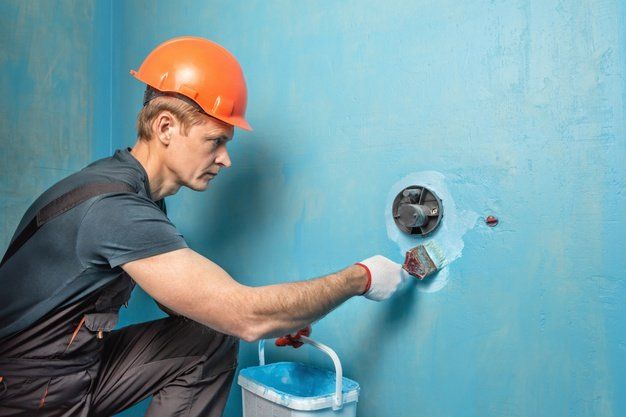Waterproofing Nashville, Tennessee

When it comes to homes and commercial buildings, the importance of waterproofing has increased enormously. Waterproofing not only provides a safe environment for living in, but also ensures that the structure is stable in any given condition. The term 'waterproofing' is sometimes used interchangeably with 'insulation'. A
waterproofing foundation refers to a method of creating a material or structure that is water-resistant or waterproof so as to keep it relatively unaffected by liquid or precipitation. These can be used both in wetter climates or below the water level in a pond or lake.

Contact Us
Different Types Of Waterproofing Services Available Today
Some typical waterproofing materials include:
- Concrete
- Bitumen membranes
- Block walls
- Bricks
- Blocks
- Tiles
- Brick sealers
- Masonry shingles
- and Granulated concrete
There are also other types of waterproofing available today, such as:
- Marine structures
- Plastic membranes
- Fabric
- and fiberglass
With the increasing demands for waterproofing in homes and buildings, numerous waterproofing companies provide services at affordable prices. Let us take a look at the standard method of waterproofing and its various pros and cons.
Concrete Waterproofing Systems
Installing concrete waterproofing systems is an effective method of preventing the growth of mold, mildew, and algae. It can avoid damage to the structure caused by leaks or bursts. The most popular form of concrete waterproofing systems is crack sealant. It seals the cracks in the concrete so as to prevent water from seeping in. This method is quite effective in preventing problems such as puddling, cracking, and expansion of water in the base material.
Bitumen Masks
Using thick, natural-looking fibers of the bitumen, these membranes are applied over the exterior surface of the walls and ceilings. These membranes are highly resistant to any kind of external pressure. Most houses and commercial establishments use these bitumen waterproofing materials in combination with other methods. A typical waterproofing mask consists of a flexible membrane that fits tightly on the face of the wall or ceiling. This membrane is further divided into two pieces. One part is placed over the exterior surface and the other is fitted inside the inner one.
In case of small leaks or cracks, the membrane can be replaced with a new one and spread over the surface. However, this will require the assistance of a professional engineer, who can perform a series of chemical reactions to bond the new membrane to the area being waterproofed. On the contrary, in cases of larger gaps and cracks, it would be a better idea to replace the existing membrane and pave a smooth, unobstructed way to the exterior. In this case, the use of a special waterproofing admixture could also be a suitable option.
What are the different waterproofing products you can use?
Waterproofing products have also undergone several modifications over the years. For instance, the first liquid waterproofers were composed of asphalt, and they worked by creating a physical barrier on the surface by which liquids cannot penetrate. Liquid permeability is a very important factor to consider when going for liquid waterproofing, since it can be directly proportional to the degree of protection offered. Asphalt is a poor liquid waterproofing agent because it easily forms clogs and other forms of pore blockage, which completely devalue its property.
Other waterproofing solutions exist, such as the use of a combination of asphalt and bitumen. The asphalt coating is designed to act as a liquid barrier on the surfaces while the bitumen acts as a sealant to prevent any leakage from occurring. Other types of protective coating also exist that involve the application of synthetic compounds on concrete or steel surfaces. The most popular materials used in this method include concrete paint, polyurethane or liquid rubberized coating. A recent development however, is the implementation of a synthetic, environmentally safe liquid polymer on concrete surfaces, called the "bitumen seal".
Another solution for waterproofing concrete surfaces is to make use of crystalline admixtures. These substances, which are similar in composition to diamonds, act as a densification agent, which forms a protective bubble on the surface of the concrete. These bubbles are invisible to
the naked eye, and they are capable of preventing a significant amount of moisture from penetrating into the ground. Although these admixtures are not technically "permeable", they are effective at preventing moisture from seeping into the concrete structure, and they are also resistant to the penetration of chemicals.
Understanding the Basics of Waterproofing Your Property
Waterproofing refers to the procedure of making an outer object or structure resistant to water, usually by sealing it from air and exterior water. These seals are often applied to keep water out of certain objects like doors and windows, or to prevent damage due to leakages. Common applications of waterproofing materials include tanks, storage bins, doors, roof eaves, and sealants for concrete slabs, bricks, etc. These items can also be used underwater to specified depths for protecting valuable property from water damage. In fact, leaks beneath the surface can be detected long before actual damage occurs.
What are the Different Waterproofing Techniques?
Waterproofing employs several techniques for achieving its result. The most common ones are primary coating, water absorption, secondary coating, and sub-micron films. It is possible to employ any or all of them in a given building project depending upon the extent of water resistance needed for that purpose. But for ordinary purposes, primary coatings are a practical option because they are easy to apply, cheaper and faster acting.
Primary waterproofing involves spraying a coating on an area such as a basement floor, walls, ceilings, and concrete floor. Though concrete waterproofing is quite simple, it can be applied for industrial, residential, and commercial buildings. This is a necessary measure to make for basement waterproofing Nashville, TN since most of the time, they can be wet and are susceptible to damages due to mold and mildew. Besides, leaks in areas like these are not only inconvenient, but expensive as well.
A typical application for concrete waterproofing involves applying a high-quality crystalline admixture. This mixture can be made of recycled resin and recycled bitumen to provide the best possible resistance to water. However, before applying any kind of crystalline admixture, the area should be swept and vacuumed thoroughly to loosen any dirt, dust, and soil. Afterward, a fine-grit sandpaper should be used to polish the surface to create a non-scratchy finish.
Two Types of Waterproofing Surfaces
There are two main types of crystalline coatings for waterproofing surfaces; primary coating and sub-slab membrane systems. A primary coating system involves spreading a thin layer of the coating material over the surface to form a protective film. For example, in case of a wet surface like a shower floor, the sub-slab membrane system would prevent water from seeping into the floor through the small gaps present in the surface.
On the other hand, a wall-mounted system would require a secondary, liquid-filled coating. This coating could either be applied directly on the foundation walls or be held within acrylic milieums that are suspended below the wall surface. The liquid-filled systems offer better image credit than the applied-on-the-wall systems because they eliminate the need to remove the top coating prior to application.
It is important to note that the two water-tightness systems discussed here differ from each other only by the method of application. In the case of primary-coated systems, the substrate is coated first with a rubber or PVC membrane. Subsequent coats are applied with acrylics, silicone, rubber, or other suitable emulsions. On the other hand, sub-slab-coated systems must be pre coated with a rubber or PVC membrane and then penetrated with an emulsified solvent. Both processes allow for a more efficient waterproofing process because there are fewer barriers to prohibit liquids from penetrating.
Forms of Waterproofing
There are many other forms of Waterproofing, including Bitumen Membrane Systems, Drywall Taping, and Engineered Wood Floor Waterproofing. These processes have different objectives, and the way they accomplish their goals may differ as well. In essence, however, all these forms of Waterproofing provide the same benefits: they help to prevent moisture from entering a space, they prevent the growth of mold and mildew, and they reduce the potential for structural failures. All these benefits translate into significant cost savings in the long run. So, if your property needs a fresh start, maybe it's time to consider the advantages of Waterproofing.
